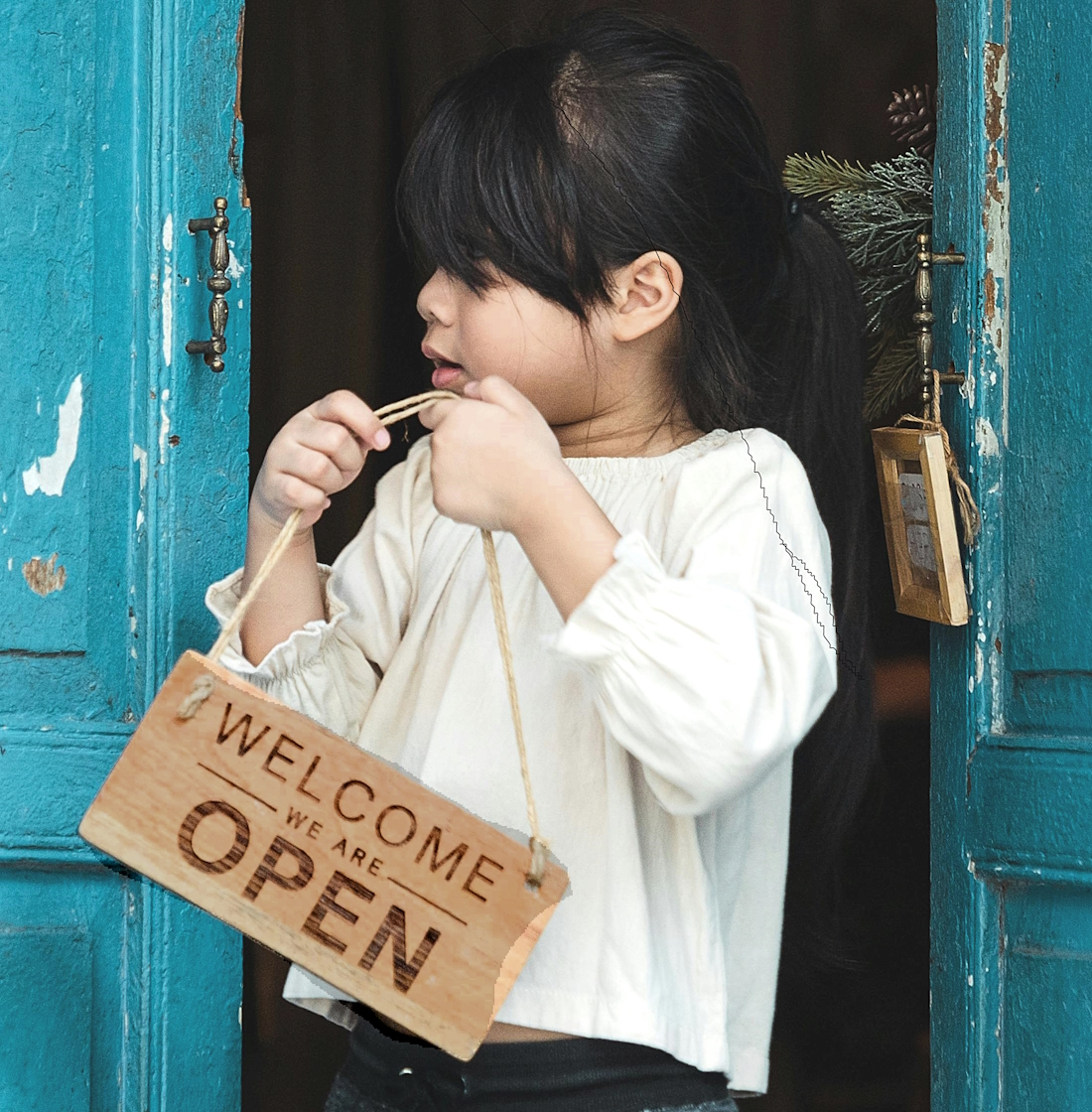Current e-Journal – August 19, 2025
In this week’s Systems Change Newsletter…
- Invitations and Announcements
- Catalytic Thinking Exercise: Opening the Door to Your Community
- Resources to Further Your Practice
Invitations and Announcements:
Documenting Program Learnings (aka Evaluation)
The final phase of Creating the Future’s mission is about documenting what we’ve learned and sharing it broadly. After 10+ years and 30+ demonstration projects, there is a lot of learning to document! At our Integrity Team (aka board) meeting next month, we’ll be talking about Plan B for this project, given the changes in the funding environment. Part of that will include the potential for incorporating AI into the documentation process. We hope you’ll join us to explore what is possible. Info is here…
Update on Federal Grantmaking
President Trump recently made significant changes to federal grant processes, changing terms and conditions, including the terms under which the feds can terminate a grant. Additional restrictions prohibit grants from being used to promote “racial preferences,” as well as further prohibiting awardees from “denying a sex binary” or “the notion that sex is a chosen or mutable characteristic.” This page from the National Council of Nonprofits has details, as well as an up-to-date chart with executive orders that affect nonprofits. We continue to urge you to support the National Council of Nonprofits; they are doing the work for all of us.
Catalytic Thinking Exercise:
Opening the Door to Your Community
Creating the Future’s community has always been deeply integrated into our work. When people ask how we’ve built such deep connections, here is what we tell them:
Open your doors.
Creating the Future is built upon openness. Not transparency – openness. There is a difference
Transparent: When something is transparent, there is still a barrier there, it’s just see-through – a glass door vs. a wooden door.
Open: There is no barrier. The door is open. People can walk right in, look around, hang out.
Our community members know that our door is always open.
- Our board meetings and strategy meetings are all open for you to participate in – not just watch, but be part of, sitting at the table with us as co-creators vs. guests.
- When there are big decisions to make, you are making those decisions. You can see how that unfolded back in 2022, when we were deciding what’s next for our mission.
Right now, organizations are even more dependent on their communities than ever, while those community members are in need of more and more support from local organizations. The difference between openness and transparency can make a huge difference for that level of connection. It all comes back to the first question in the Catalytic Thinking framework:
Who will be affected by what we are working on?
And what will it take for them to participate in the decision-making
and lead the direction we take?
That question itself suggests openness, co-creating our work with our community members (vs. going it alone, thinking we know best). In times like these, we need to get past the us-in-here / you-out-there way we’ve worked in the past. These times demand that we open the door, creating a big US, banding together to ensure our communities are as safe and healthy as possible.
(If you doubt that us-in-here / you-out-there description, consider the common phrase, “We need to go out to the community to see what they think.” THEY are out there; WE are in here.)
When your work is truly open and engaged, there is no out or in; there’s just all of us together. And these days, with so many of our community members feeling so much pain and fear, it is more important than ever that we keep that door open
Try This:
That first Catalytic Thinking question – who will be affected, and what will it take for them to participate and lead – is about being radically inclusive. It is an invitation that says, “Come on in, the door is open.”
For whatever you are working on or planning, that starts by defining the ripples in your pond.
If your work were a stone tossed into a pond, who is in that first ripple – the people immediately touched by your work? That might be your clients or patrons, your staff and volunteers, your vendors, your supporters.
 Then who is in that next ripple – the lives touched by all those people in the first ripple? Perhaps the families of your staff. Perhaps the workplaces of your clients. And etc.
Then who is in that next ripple – the lives touched by all those people in the first ripple? Perhaps the families of your staff. Perhaps the workplaces of your clients. And etc.
When you are done, you will have a map of your influence and impact. It’s a pretty impressive list, right?
From there, as you are making decisions, consider what would need to be in place to involve at least the people in your first ripple. Depending on the work you’re stepping into, you may want to connect with folks in the 2nd or 3rd ripple as well. That’s the power of listing them all, to see that whole ecosystem, to make those inclusion decisions.
For each group, you can then ask…
- What would all those people need to know in order to participate? And what would lead to their knowing that?
- What would they need to experience? And what would need to be in place for them to experience that?
- What would they need to be assured of? And what would it take for them to be assured?
For example, for Creating the Future’s open meetings, folks need to know the variety of ways to participate. We do that in every post announcing a meeting, like this one. They also need to have as much background about the topic as possible. And we include that in every meeting announcement as well, with links and background all in that one place. You can see that here.
We know that people need to be assured that they will feel like they belong, especially if it is their first time attending a meeting. Because that spirit of welcoming is baked into the format of our meetings, we encourage folks to watch several of the recordings of those meetings before participating at the table, to get a feel for that welcoming environment.
From there, you can then ask those same questions for you and your team.
- What would you need to be assured of? What would GOOD look like for you? And what would it take for you to have that assurance? What would need to be in place, to assure you?
- What would you need to feel? And what would it take for you to feel that?
- What would you need to know? And what would it take for you to know that?
This is where you can address your concerns. If you’re afraid that folks might demand things you cannot deliver, first identify what would GOOD look like. If those demands are about what you DON’T want, what DO you want? From there, what would create that good situation?
Inclusion is about intent. After the intention, though, it is about creating conditions for your collective success. And the questions of Catalytic Thinking can guide you to create those conditions.
The benefits of opening the door and inviting people to be part of the work you will all do together – those benefits can’t be overstated. It is all the benefits of having a massive army of support for what you are stepping into. That is why the very first set of questions in the Catalytic Thinking framework are rooted in Radical Inclusion.
Resources to Further Your Practice:
- READ: This article from Stanford Social Innovation Review provides great examples of Catalytic Thinking in action. Read it here…
- REVIEW: This page summarizes various aspects of the Catalytic Thinking framework, with text and videos. See it here…
- LEARN: Our self-paced classes are a great way to dive into the questions. Dive in here…
Help Keep Our Programs Freely Available
Creating the Future’s eJournal is free. And there are no financial barriers to our classes – tuition is whatever folks can afford. Because we never want money to stand in the way of people learning. If you value our content and our approach, please donate here – and please consider becoming a monthly supporter of our work.
eJournal Archives:
If you’re new to our eJournal, or just want to remind yourself of past practice exercises we’ve shared, check out our eJournal archives here.
![]() Creating the Future’s Mission
Creating the Future’s Mission
Teach people how to change the systems they find themselves in, to create a future different from our past – all by changing the questions they ask. SUBSCRIBE to get this e-Journal
Creating the Future is a 501(c)(3) tax exempt organization in the U.S.A

